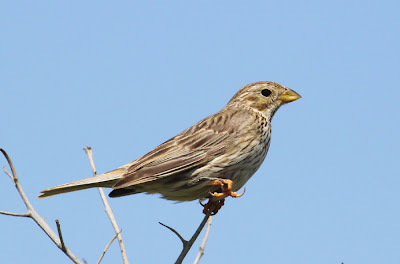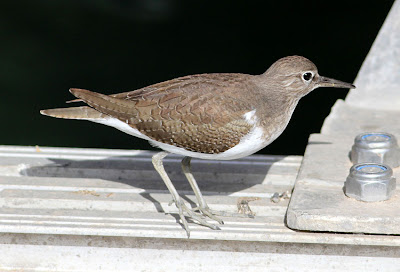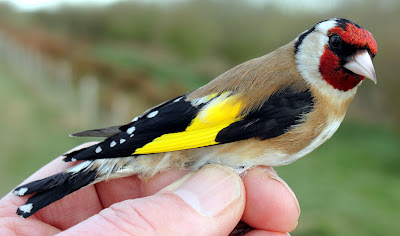It was back to the other local patch today with a walk out Pilling Way trying to spot changes in the area during my two weeks enforced absence in Menorca.
I started early at Lambs Lane/Fluke Hall where calls and song led to Lesser Whitethroat, Chiffchaff, Whitethroat, Blackcap, Willow Warbler, Reed Bunting and Cuckoo, singles of each except for at least 4 Whitethroat and 2 or 3 Willow Warblers.
In Menorca Wheatears were still going through in the first week of May, rock-hopping along the shore on a number of mornings, so today I was keen to get to Lane Ends, hoping to find a few of the “Greenland” type.
Wheatears weren’t the most obvious bird at Lane Ends, it was Swallows, dozens of them stretched out along the fence behind the sea wall, several House Martins mixed in and all likely looking migrants. One or two folk have said that although Swallows arrived during the past two weeks there should still be plenty to come, and this morning I reckoned that is exactly what was happening, even though it was a murky old morning, the rain and drizzle of yesterday barely gone. Into the notebook went "80+ “Swall” and 15 “Houma”, soon after adding "12+ Swift".
Barn Swallow
The plantation had singing Sedge Warbler, Reed Warbler and Reed Bunting, and on the water a pair of Greylag with 5 well grown young. The sea wall to Fluke found 8 Skylark, 6 Goldfinch, 5 Wheatear and a single Corn Bunting, the bunting in precisely the same stretch of fence line a pair used last year. The grass isn’t as far on this year so the buntings may have to wait if they choose to breed again.
Of the 5 Wheatears, all were females and I could catch one only, a second year and definitely a “Greenland” type, a bulky individual with a wing length of 111mm and a weight of 38gms.
"Greenland" Wheatear
Some of the Lapwings at the Hi-Fly fields have young hidden away but it’s a difficult place to find the young for ringing, the vegetation being a little high, not helped by the nesting Redshanks and Oystercatchers helping the Lapwings to spot the intruder. A wary male Shoveler on the pool was highly suggestive of a female hidden away close by. More Skylarks up here with one pair feeding young out of the nest, another female Wheatear and more Swallows trickling through and heading north as the cloud lifted.
Shoveler
A quietish walk then, but good to get back to the other patch before heading home for the afternoon and a catching up with the family.


























































.jpeg)






.jpg)












